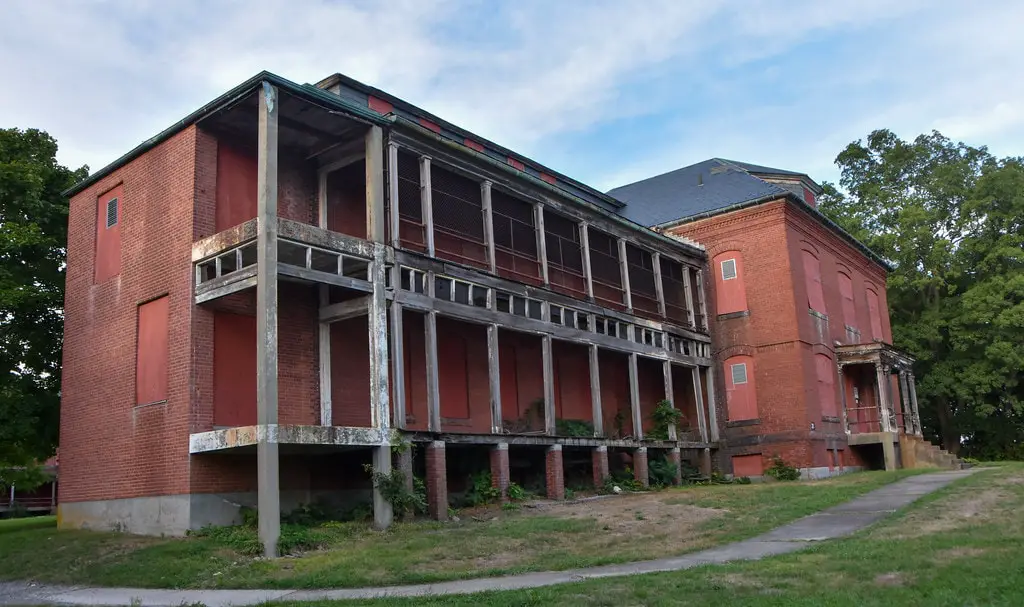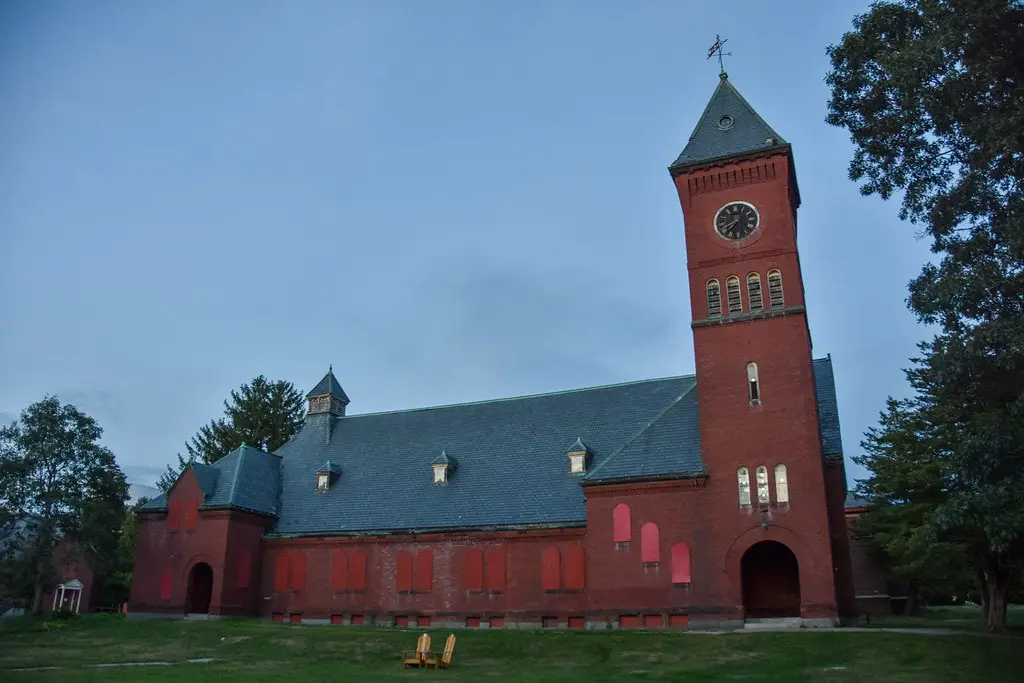Nestled in the charming town of Medfield, Massachusetts, the historic Medfield State Hospital, originally known as the Medfield Insane Asylum, carries a story rich in local history, architectural innovation, and a changing understanding of mental health care.
Established in 1892, this stately structure served as a sanctuary for chronic mental patients, marking an essential chapter in the state’s mental health care history narrative.
The Innovative Design and Infrastructure
With its inauguration, Medfield State Hospital emerged as a pioneer in psychiatric care, embodying the shift from the Kirkbride Plan, dominant at the time, to the innovative “cottage plan.”
Masterminded by architect William Pitt Wentworth, this approach broke away from conventional, intimidating asylum structures and embraced a homelike environment instead.
Blossoming from an initial count of twenty-two buildings, the hospital expanded to a sprawling complex of fifty-eight structures interspersed across 900 acres of picturesque landscape. It was an autonomous community in its own right, producing its power, heat, water, and even food.
Livestock grazed the hospital’s vast lands while fresh produce was harvested from its gardens. The hospital was a beacon of autonomy and self-reliance, a testament to the resilience and determination of the human spirit.

Life and Treatment: A Shift in Philosophy
The daily life of patients at Medfield State Hospital reflected the changing attitudes towards mental health during the late 19th and 20th centuries. At its peak, the hospital was home to over 2,200 patients, each experiencing the promise of care and recovery.
However, the winds of change began to blow in the 1960s and 70s as a new philosophy of mental health care emerged. The mantra became one of the “least restrictive environments possible” for mental health patients, a paradigm shift that significantly impacted life at Medfield, Massachusetts.
The population dwindled as patients found new homes in community-based halfway houses and hospitals, and the once-bustling community saw a quiet transformation.

The Silent Witnesses: Medfield State Hospital Cemetery
Within the grounds of the hospital lies the poignant Medfield State Hospital Cemetery, a silent testament to the lives lived and lost within the hospital’s walls.
Between 1918 and 1988, 841 patients found their final rest here, commemorating their lives with humble gravestones.
Initially, these graves bore only numbers, an impersonal record of the lives they represented. But, in a heartwarming initiative, a local Boy Scout from Troop 89 took it upon himself to replace these numbered markers with ones bearing names and dates, giving dignity and identity back to those who once called Medfield State Hospital their home.

Closure and Aftermath: A New Chapter
The first decade of the 21st century marked the end of an era for Medfield State Hospital. In 2003, the once-buzzing complex closed its doors, marking the end of over a century of mental health care service.
During the 1970s, environmental considerations led to the transfer of a significant portion of the property to the Department of Environmental Management. Then, in 2014, the Town of Medfield took ownership of the property, spearheading extensive cleanup efforts that transformed the area into a public park.
Today, the former hospital is a testament to Medfield’s rich history. Its impressive structures have found a new life as filming locations for acclaimed motion pictures like “Shutter Island,” “The New Mutants” and “The Box.” As you stroll through the park, you can almost hear the echoes of the past, a subtle reminder of the hospital’s enduring legacy.

Breathing New Life into the Medfield State Hospital
To breathe new life into the former hospital grounds, the Medfield State Hospital Development Committee was formed in 2014 to oversee the redevelopment process. Over the years, a Master Plan was developed to guide the way forward, aiming to transform the once bustling psychiatric facility into a vibrant mixed-use community space.
The plan strongly emphasizes creating a balance between housing, commercial, and open spaces, with a keen eye on preserving the site’s historic essence.
Already, some changes are visible. The Clark Building, a prominent structure within the hospital complex, was demolished to make way for new development. This marked the beginning of the physical transformation of the hospital grounds, a process that began in 2022 and is currently ongoing.

Conclusion: A Legacy Etched in Stone
While the doors of Medfield State Hospital may have closed, its legacy endures. The hospital’s story is one of innovation, resilience, and change. It reflects the evolution of mental health care, the ebb and flow of life within a unique community, and the silent stories etched into the gravestones of the hospital cemetery.
As Medfield residents and visitors alike wander through this historic site, they participate in the ongoing story of the Medfield State Hospital. It’s a story that continues to unfold, shaped by the memories of those who remember its past and the footsteps of those who walk its grounds today.
It’s a story that carries a sense of nostalgia, a testament to the power of remembering, and the importance of preserving the past, even as we move forward.
